Recently we were invited to attend the dedication of Boeing B-17G 44-83690 at the Museum of Aviation in Warner Robins, GA. On Friday, Eric Miller of Project Warbird, along with Megan and myself, drove down to visit.
Fred Bieser introduced us to the team behind the aircraft and we got to meet restoration honchos Michael Woods and Bob Denison, as well as the museum’s director, Ken Emery. These guys were super awesome and we are thankful for the opportunity to come down and visit the project.
Like most surviving B-17s, 44-83690 was built too late to see combat, being put into mothballs immediately after leaving the factory. In 1950 she was converted into a drone mothership for weapons testing, staying in that capacity until her retirement in 1960. Displayed at Grissom Air Force Base in Indiana since 1961, she was transferred to Georgia in 2015 for restoration.
Check out the photo descriptions to learn more!

The view upon entering the display hangar.
The Boeing B-29 is 44-84053, a B-model built at the Bell-Atlanta plant under license. Like Douglas and Lockheed-Vega, multiple companies manufactured the B-29 during the Second World War. Alongside the main Boeing plant in Washington, these included a second Boeing plant in Wichita, Kansas, a Bell plant in Atlanta, Georgia, and a Martin plant in Bellevue, Nebraska. The Bell B-29 plant opened on 15 April 1943 and 44-84053 is one of two surviving B-29s that were built in Georgia (the other being on display at the SAC Museum in Ashland, Nebraska).
The other two aircraft here are a Cessna AT-17 and a North American P-51H. Designed for use in the Pacific, the war ended before the H-series P-51 entered combat.
Photo taken 18 August 2023.

The nose section of Boeing B-29A 44-61739, pulled from the Aberdeen Proving Ground in Maryland.
The tail section of this aircraft was used to rebuild Jack’s Hack (44-61975) at the New England Air Museum after a tornado severely damaged the bomber in 1979.
Be sure to check out our visit update on the New England Air Museum.
Photo taken 18 August 2023.

Bell P-63 43-11728 on display beside Boeing B-17 44-83690. It is painted in the colors of a “pinball” aircraft. One of few uses the US Army had for the P-63, pinball aircraft were used for gunnery training and used bright lights to indicate potential hits. The vast majority of P-63s were sold to the Soviet Union under Lend-Lease.
This particular Kingcobra was in recent years transferred from the National Museum of the US Air Force in Dayton, Ohio.
Photo taken 18 August 2023.

The bombardier’s position aboard Boeing B-17G 44-83690.
Photo taken 18 August 2023.

The navigator’s position aboard Boeing B-17G 44-83690.
Photo taken 18 August 2023.

The nose interior of Boeing B-17G 44-83690.
Photo taken 18 August 2023.

The engine fire extinguisher bottles for Boeing B-17G 44-83690.
The museum’s staff informs us that they are currently in need of an autopilot amplifier for the bomber’s Honeywell Type C-1. Said unit would mount in this compartment.
Photo taken 18 August 2023.



The cockpit of Boeing B-17G 44-83690.
The cockpit floor has not yet been installed. Plans are underway to rebuild a Type A-1B Upper Turret for this aircraft.
Photo taken 18 August 2023.


Stations 4 and 5 (the front and back walls of the bomb bay) of Boeing B-17G 44-83690.
The main racks have not yet been installed, though they were displayed nearby.
Photo taken 18 August 2023.

The radio operator’s position aboard Boeing B-17G 44-83690. The desk is mounted on the back side of Station 5.
Photo taken 18 August 2023.
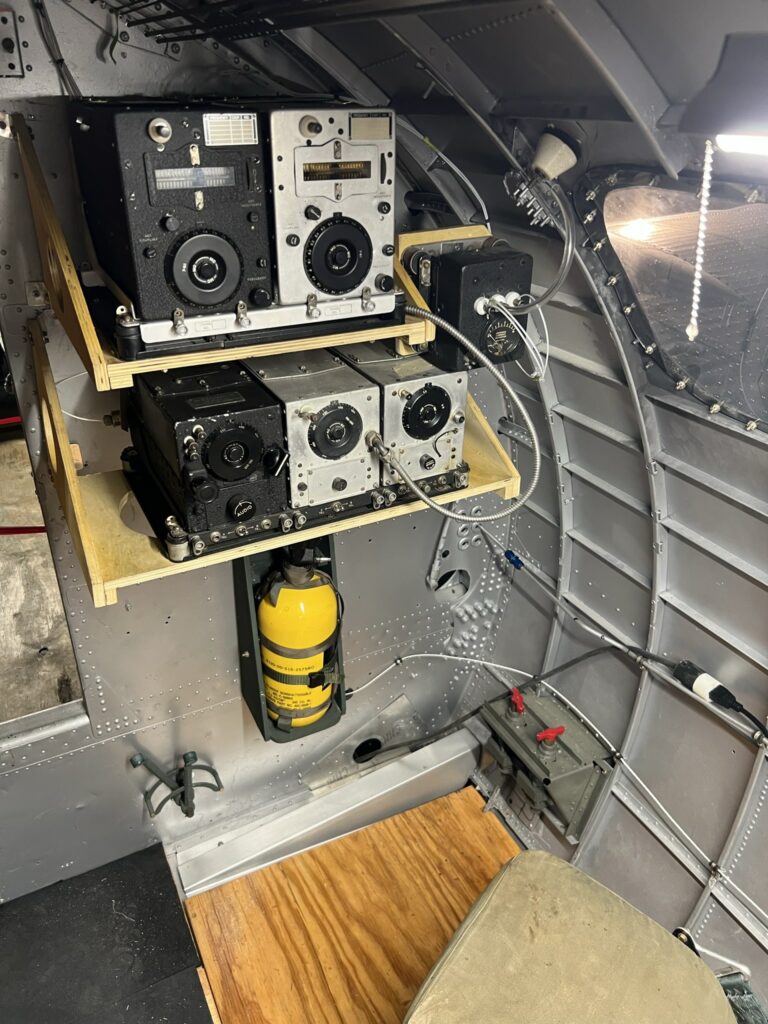
The SCR-274 Command Radio aboard Boeing B-17G 44-83690. These units are mounted on the backside of Station 5 and are controlled by the pilots via long tuning cables.
The small black relay on the right connects the radios to the antenna wire running up the tail. Power is provided by the modulator mounted above the radio operator’s desk.
Photo taken 18 August 2023.
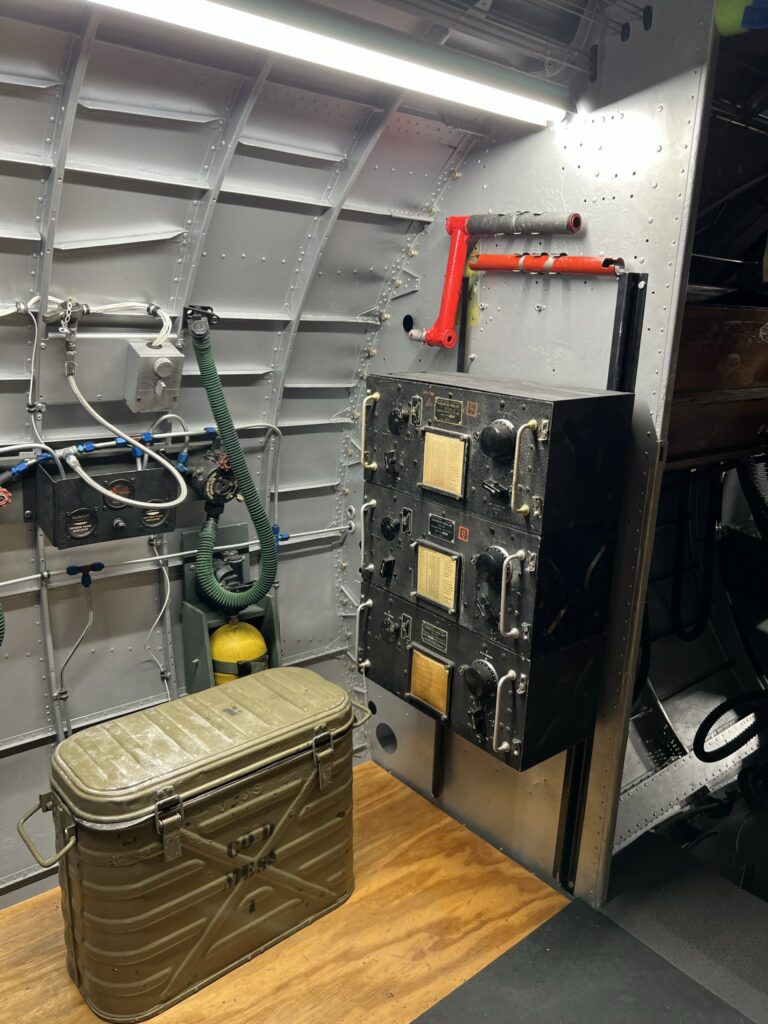
The front wall of Station 6 (the back wall of the radio compartment) aboard Boeing B-17G 44-83690.
Here tuning units for the SCR-287 Liaison Radio are stored. Each tuning unit covers a different range of frequencies.
Photo taken 18 August 2023.
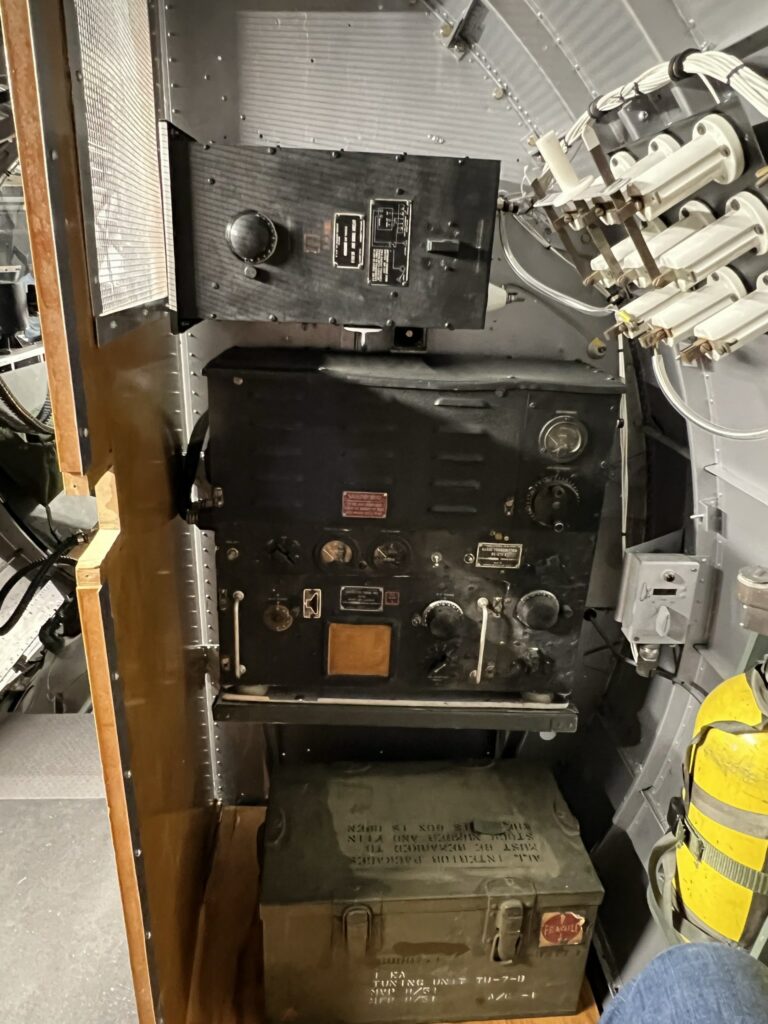
The BC-375 Transmitter and BC-306 tuner for the SCR-287 Liaison Radio aboard Boeing B-17G 44-83690. These units are mounted on the front wall of Station 6 (the back wall of the radio compartment), immediately behind the radio operator’s seat.
The BC-348 receiver sits on the radio operator’s desk. Power for the system is provided by a large dynamotor on the opposite side of this wall.
The large knife switch on the right switches the system between its main antenna (a wire running up to the tail) and the trailing wire antenna in the waist compartment.
Photo taken 18 August 2023.
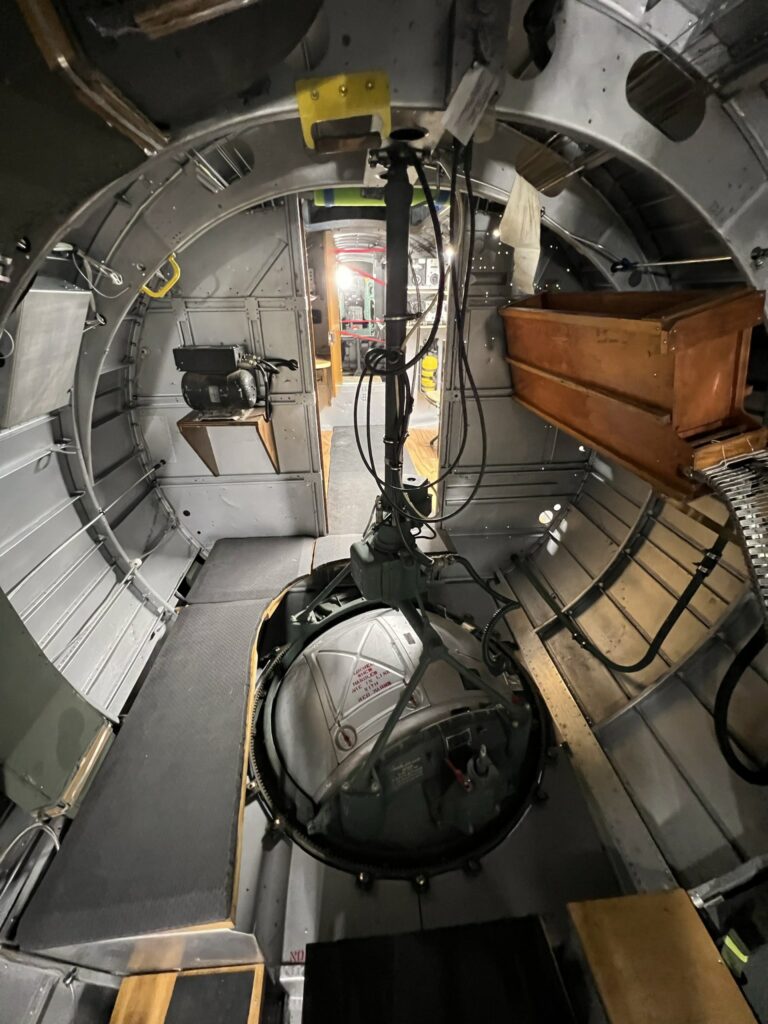
The Type A-2A ball turret aboard Boeing B-17G 44-83690.
Amongst the various surviving B-17s today, this is one of the nicer ball turret restorations I have seen. Not only is the A-2A accurate for a G-model B-17, but the turret was restored with equipment appropriate for the A-2A. One common mistake is to mount an oxygen bottle on the frame assembly, which is accurate on the older A-2 but not the A-2A (as it was connected to the aircraft’s oxygen supply).
Photo taken 18 August 2023.

The Type A-2A ball turret aboard Boeing B-17G 44-83690.
This type of ball turret is accurate for all Boeing B-17Gs.
Visually, the ball on this turret is identical to the one we need for Lucky Thirteen, though the older A-2 had plexiglass covers which capped the sides (making it slightly more aerodynamic).
Photo taken 18 August 2023.

The interior of Boeing B-17G 44-83690’s Type A-2A ball turret.
Photo taken 18 August 2023.
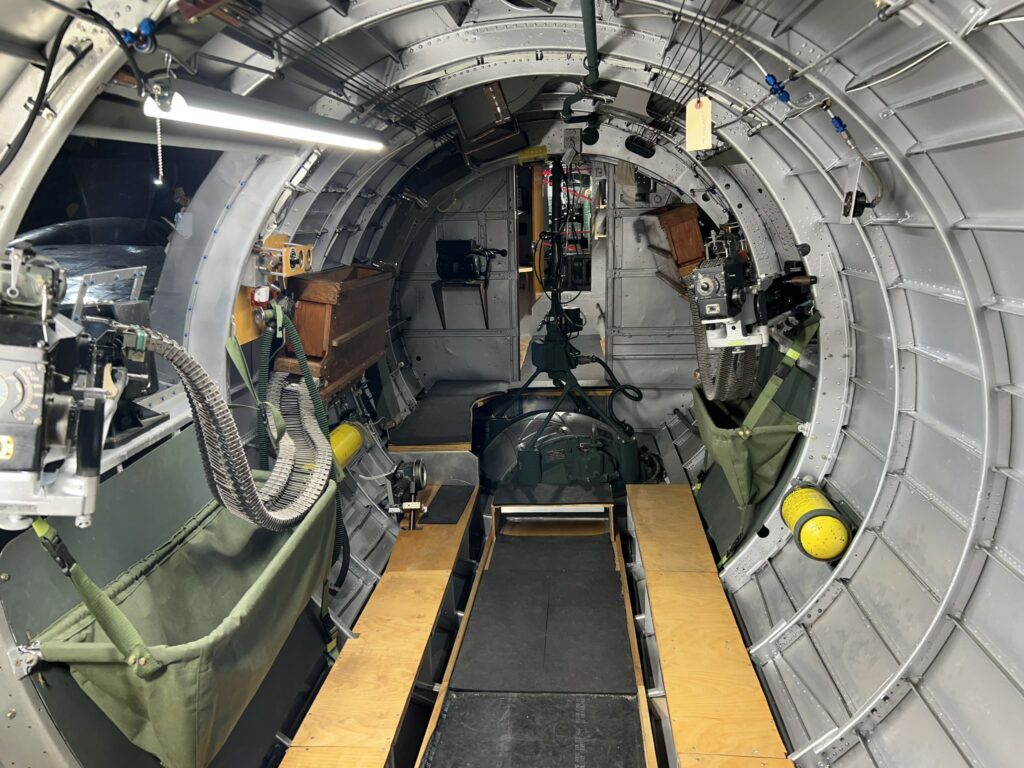
The waist compartment aboard Boeing B-17G 44-83690.
This B-17 is one of a tiny few who still have the duct work for its heating system. While older B-17s could only provide heat as far back as the ball turret, later ones piped it all the way to the tail. The Cheyenne-style tail gun even had a window defroster.
Photo taken 18 August 2023.

The HRU-28A Auxiliary Power Plant aboard Boeing B-17G 44-83690.
Photo taken 18 August 2023.

The exhaust port for the HRU-28A APU aboard Boeing B-17G 44-83690.
Photo taken 18 August 2023.
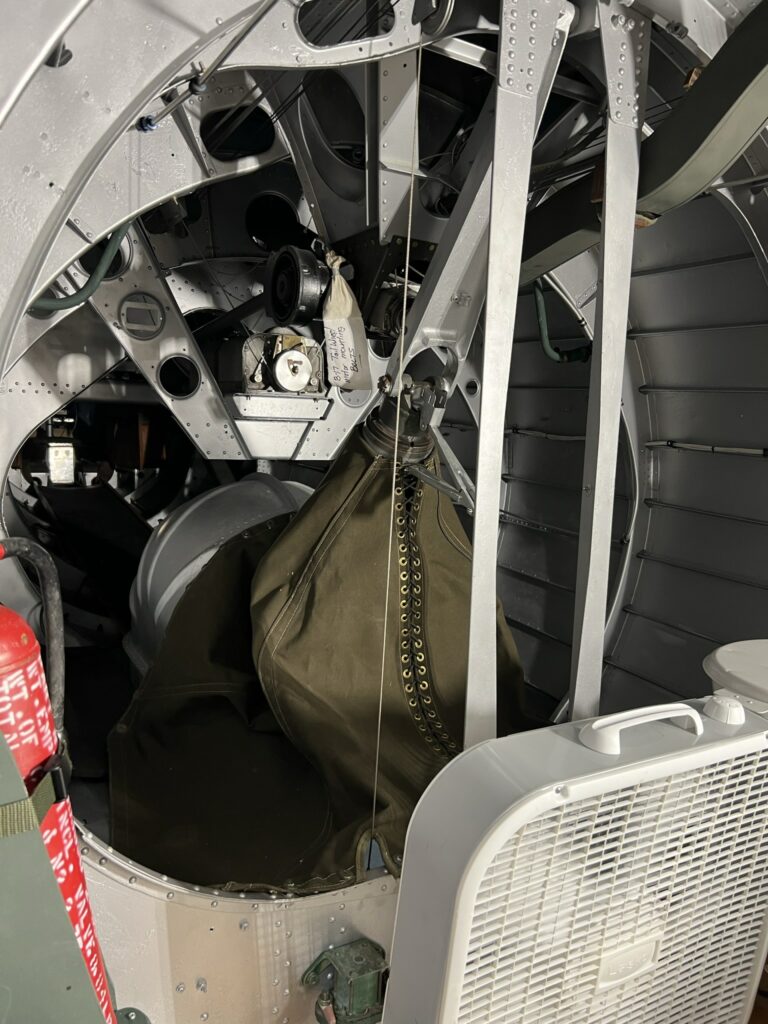
Looking back toward the tail wheel, elevator and rudder autopilot servos, and Cheyenne tail gun position aboard Boeing B-17G 44-83690.
The Cheyenne tail gun on this airplane is fully functional and can be moved with ease.
Photo taken 18 August 2023.
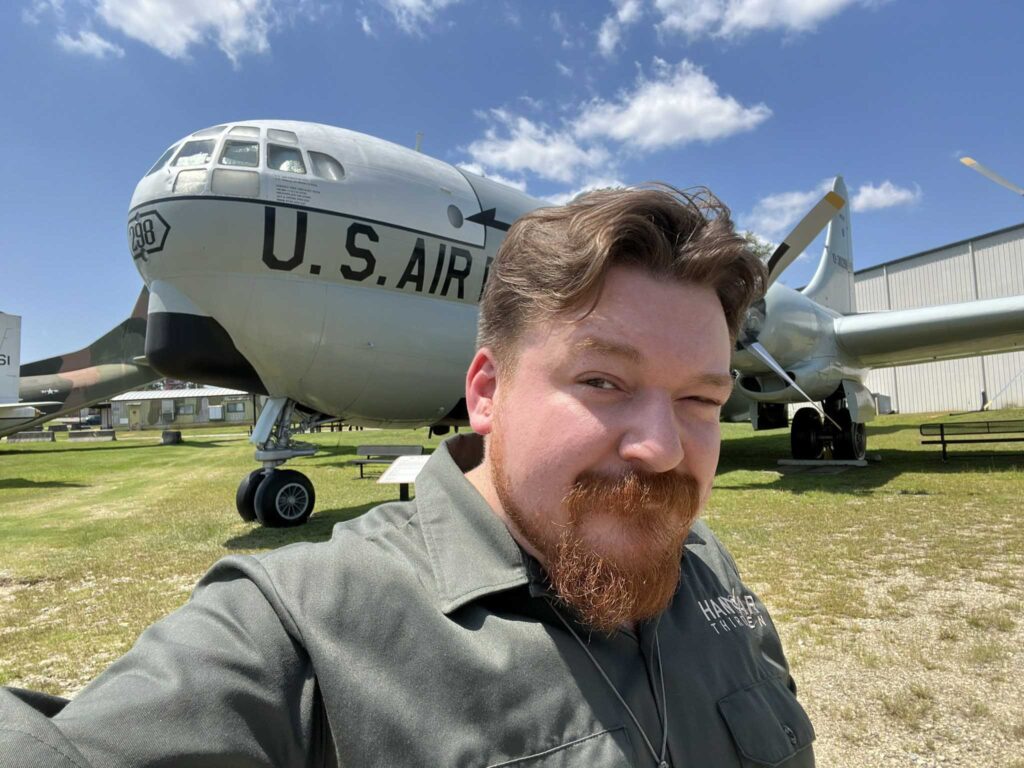
Obligatory selfie in front of an underappreciated favorite: the Boeing KC-97 Stratrotanker.
If I had the time, I would have taken one with the Douglas C-124 – another personal favorite.
Photo taken 18 August 2023.

In the museum’s original building is a wooden cutaway mockup of a Boeing B-17.
I sent this picture to the guys on the team saying “Finally, a top turret we could afford.” Ha!
Photo taken 18 August 2023.
